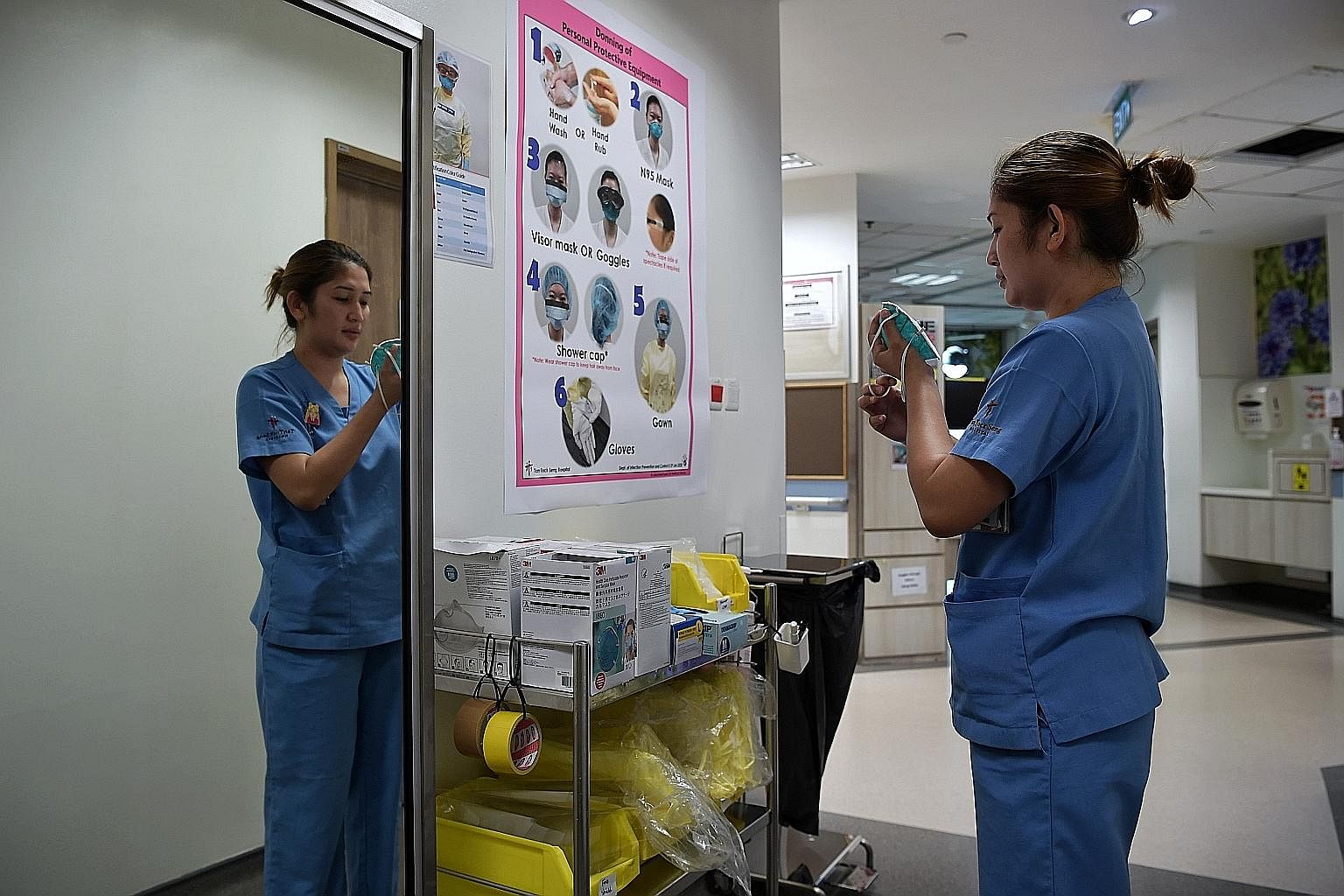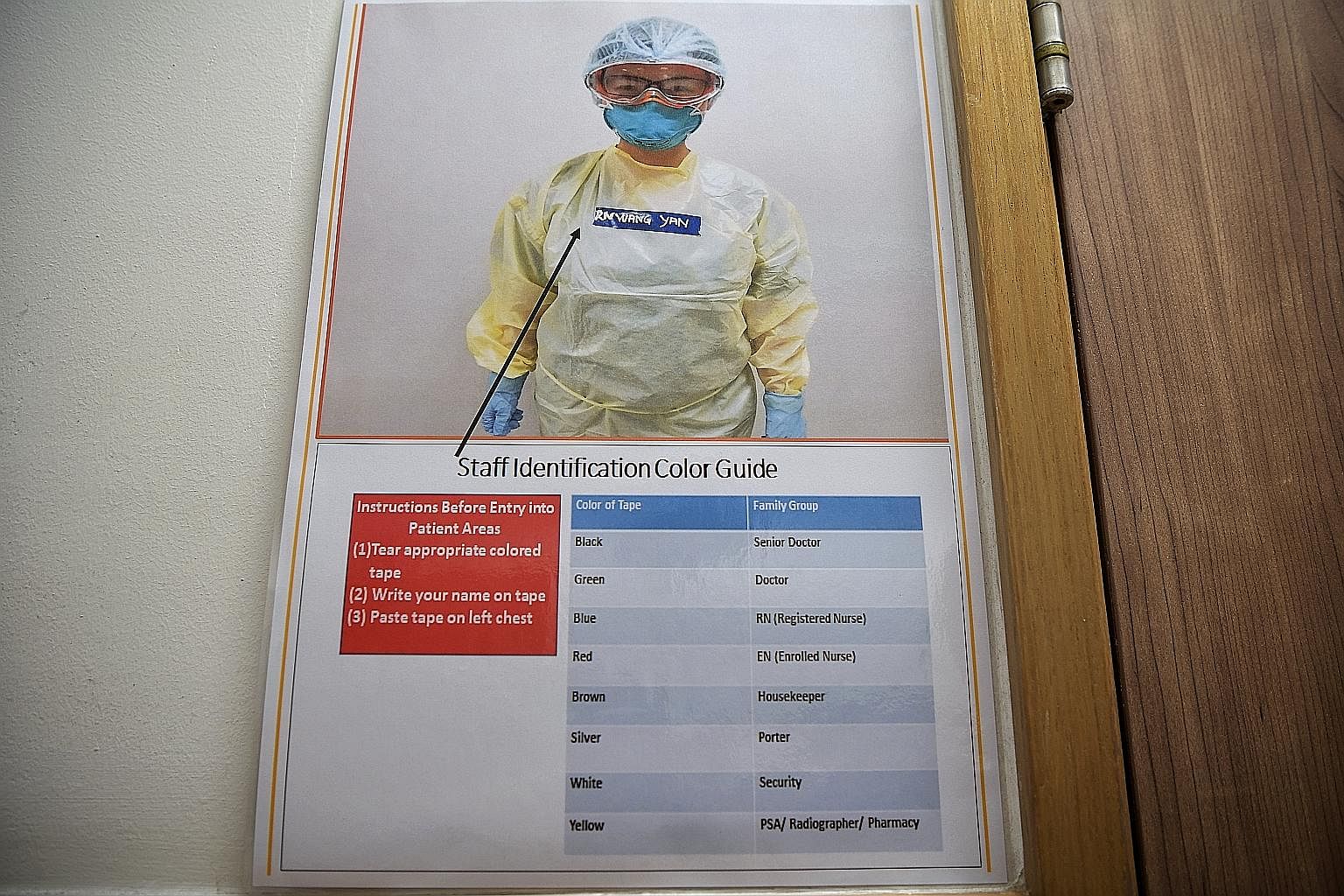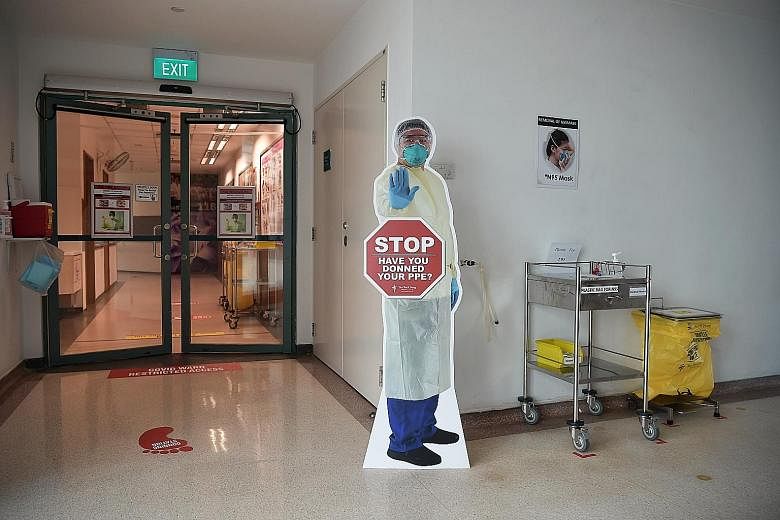When the severe acute respiratory syndrome (Sars) virus hit Singapore in 2003, Dr Hoi Shu Yin, then a front-line nurse at Tan Tock Seng Hospital (TTSH), saw the uncertainties and damage it caused.
So, in recent weeks, when the number of Covid-19 cases started to rise, the 41-year-old dug deep into her Sars experience to get the hospital ready to cope with the surge in patients.
The deputy director of nursing at TTSH said yesterday: "We learnt a lot from Sars, so our response is one of preparedness, and we are able to anticipate quite clearly what steps to take, even before the situation materialises.
"Even before we saw the exponential surge (in Covid-19 cases), we were already well under way in our preparations."
TTSH, which is under the National Healthcare Group, is one of several hospitals that have had to cope with the spike in infection cases.
It did so by converting the wards on two of its 13 floors into areas dedicated to treating only Covid-19 patients earlier this month.
With that change, there are now 230 more beds for Covid-19 patients in TTSH, as well as 36 beds in its intensive care unit (ICU) for those with more severe symptoms.
Dr Hoi and fellow deputy director of nursing Laura Ho, 48, are in the team of 10 nursing leaders behind the changes.
Dr Hoi explained: "Nurses are in charge of the wards, so we have to make sure they are equipped with the right facilities to take care of the patients and ensure their safety."

Converting a ward into a specialised Covid-19 one is not a simple process. Four key factors are taken into account.
First, the wards that are selected have to be the right ones.
Dr Hoi said TTSH avoided converting wards that deal with cardiac patients, as those have specialised equipment and facilities. Also given a miss were wards with nurses who care for stroke patients, as they have undergone specialised training.
As a result, the chosen ones were the surgical and general medicine wards as the hospital has other facilities to care for these patients.
Second, the right infrastructure has to be put in place.
Giant exhaust fans were installed in some of the chosen wards to turn them into negative pressure rooms. Signs were also put up to remind staff to take precautions as they were now in Covid-19 wards.
Third is the human element.

Ms Ho said it is a balancing act between sending the optimal number of staff to the new wards to avoid exhausting the nurses or compromising patient safety, and ensuring that critical operations elsewhere in the hospital are not affected.
Fourth, those deployed must be equipped with the right skills.
Some would have previously worked in other wards before being trained to care for Covid-19 patients. Such nurses are given special training, including drills on how to handle specimens taken from patients or transporting patients on the correct route.
An important part of equipping these nurses and staff is peer support. Ms Ho said: "The situation can change any time, we must be ready for any (change). We have to constantly engage the ground to reassure them, to make sure our staff are ready."


Another institution taking measures to cope with the surge in cases is Alexandra Hospital, which is under the National University Health System healthcare cluster.
It has cared for 259 Covid-19 patients since the start of the outbreak, about 200 of whom are migrant workers.
A spokesman for the hospital said its bed capacity has been increased by more than 30 per cent, with about 100 beds set aside for coronavirus patients.
The hospital has also converted two empty wards into isolation wards with negative pressure rooms, and two general wards into Covid-19 wards for patients who do not need oxygen support.
Three rooms in an isolation ward were converted into ICU rooms.
Overseeing the opening of some of the new wards was assistant director of nursing Doreen Heng, a veteran of 24 years who previously helped turn a disused ward into a ward for Sars patients.
"Due to the fast-evolving nature of the situation, the teams at the hospital have had to be nimble, flexible and efficient in adapting to the changing face of the pandemic," she said.


